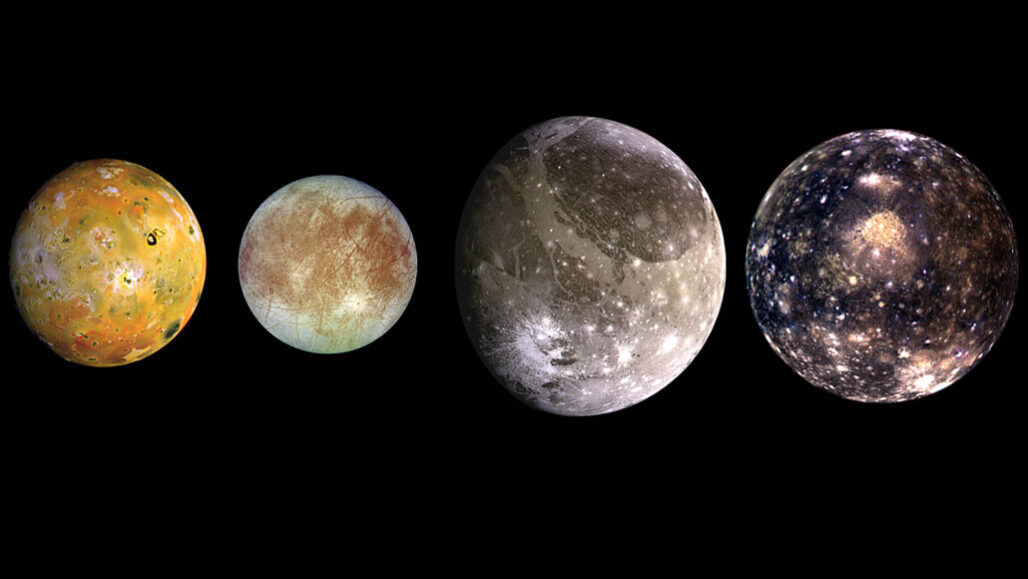Europa has always held a fascination to me. I think it’s the concept of a world with a sub-surface ocean and the possibility of life that has inspired me and many others. In September 2022, NASAs Juno spacecraft made a flyby, coming within 355 kilometres of the surface. Since the encounter, scientists have been exploring the images and have identified regions where brine may have bubbled to the surface. Other images revealed possible, previously unidentified steep-walled depressions up to 50km wide, this could be caused by a free-floating ocean!
Continue reading “Juno Reveals Secrets About Europa’s Icy Surface”New Photos Show Jupiter’s Tiny Moon Amalthea
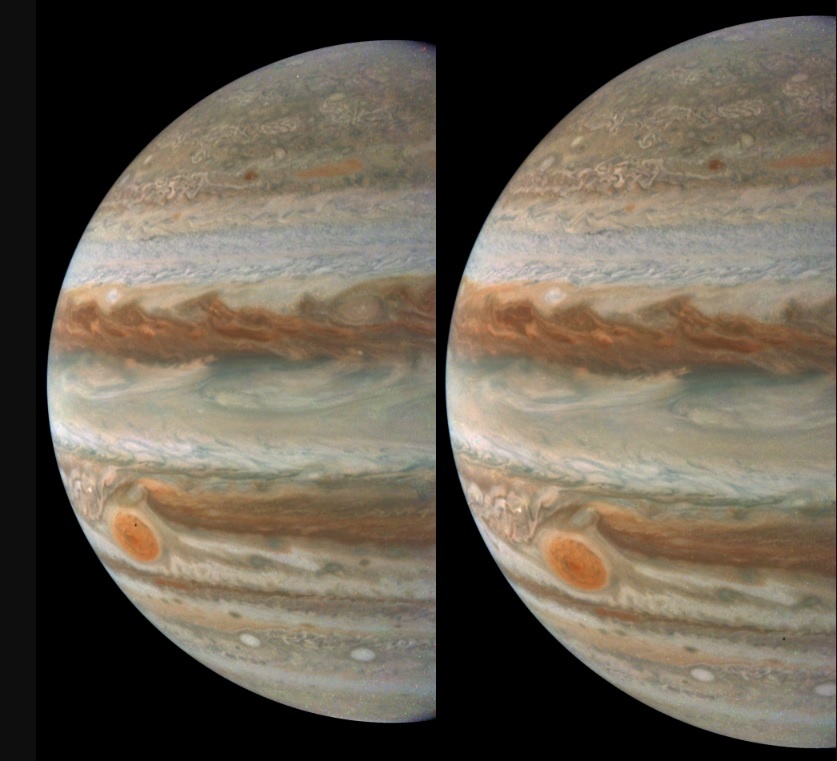
NASA’s Juno spacecraft spies a tiny inner moon of Jupiter, Amalthea.
It’s tiny, but it’s there. By now, we’re all used to seeing amazing photos of Jupiter courtesy of NASA’s Juno mission on a routine basis. Many of these are processed by volunteer ‘citizen scientists,’ and they show the swirling cloud-tops of Jove courtesy of the spacecraft’s JunoCam in stunning detail.
Continue reading “New Photos Show Jupiter’s Tiny Moon Amalthea”Juno Measures How Much Oxygen is Being Produced by Europa
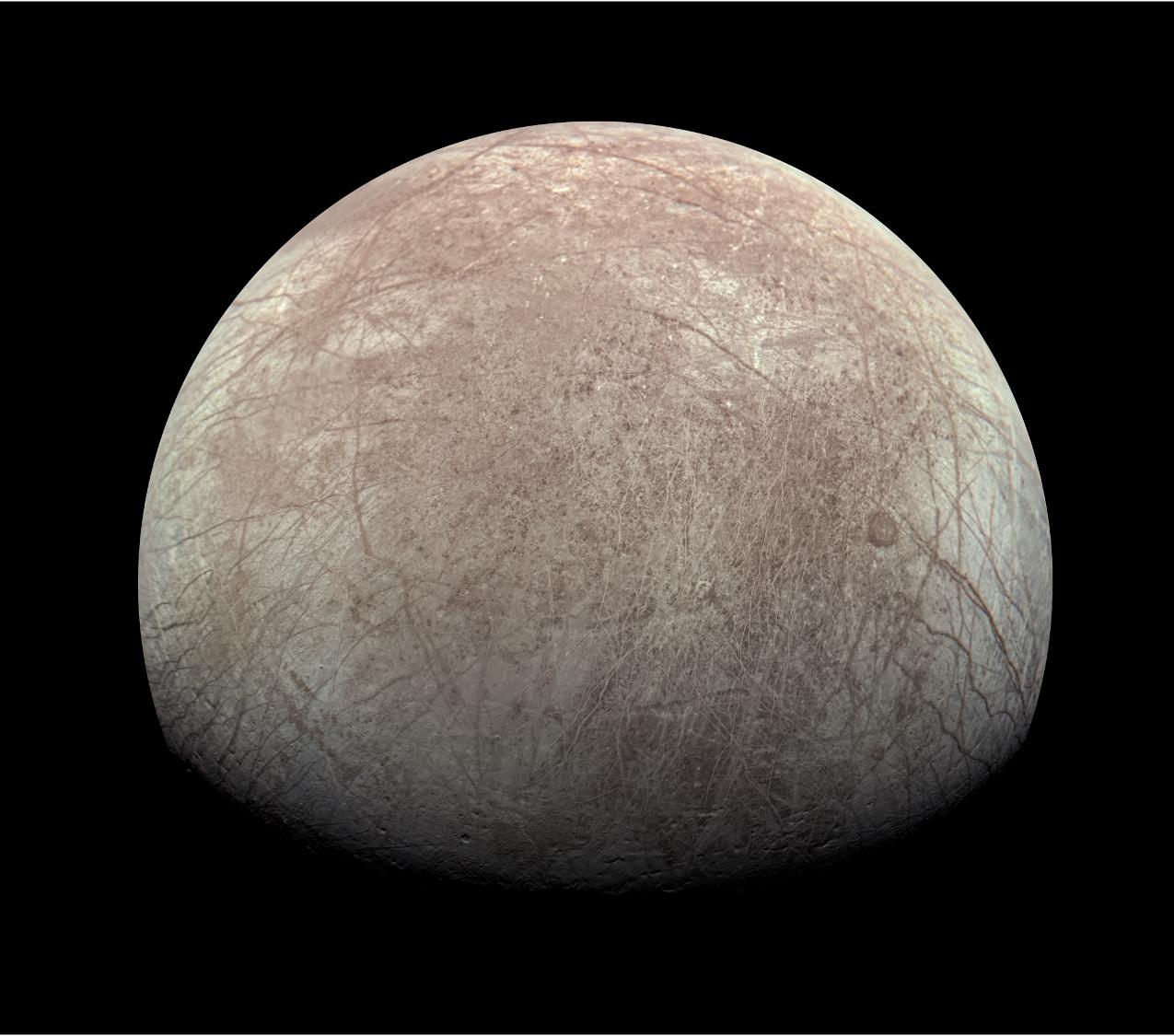
If the periodic table listed the elements in order of their importance to life, then oxygen might bully its way to the top. Without oxygen, Earth’s complex life likely would not exist. So when scientists detect oxygen on another world, they turn their attention to it.
Continue reading “Juno Measures How Much Oxygen is Being Produced by Europa”NASA’s Juno Probe Makes Another Close Flyby of Io
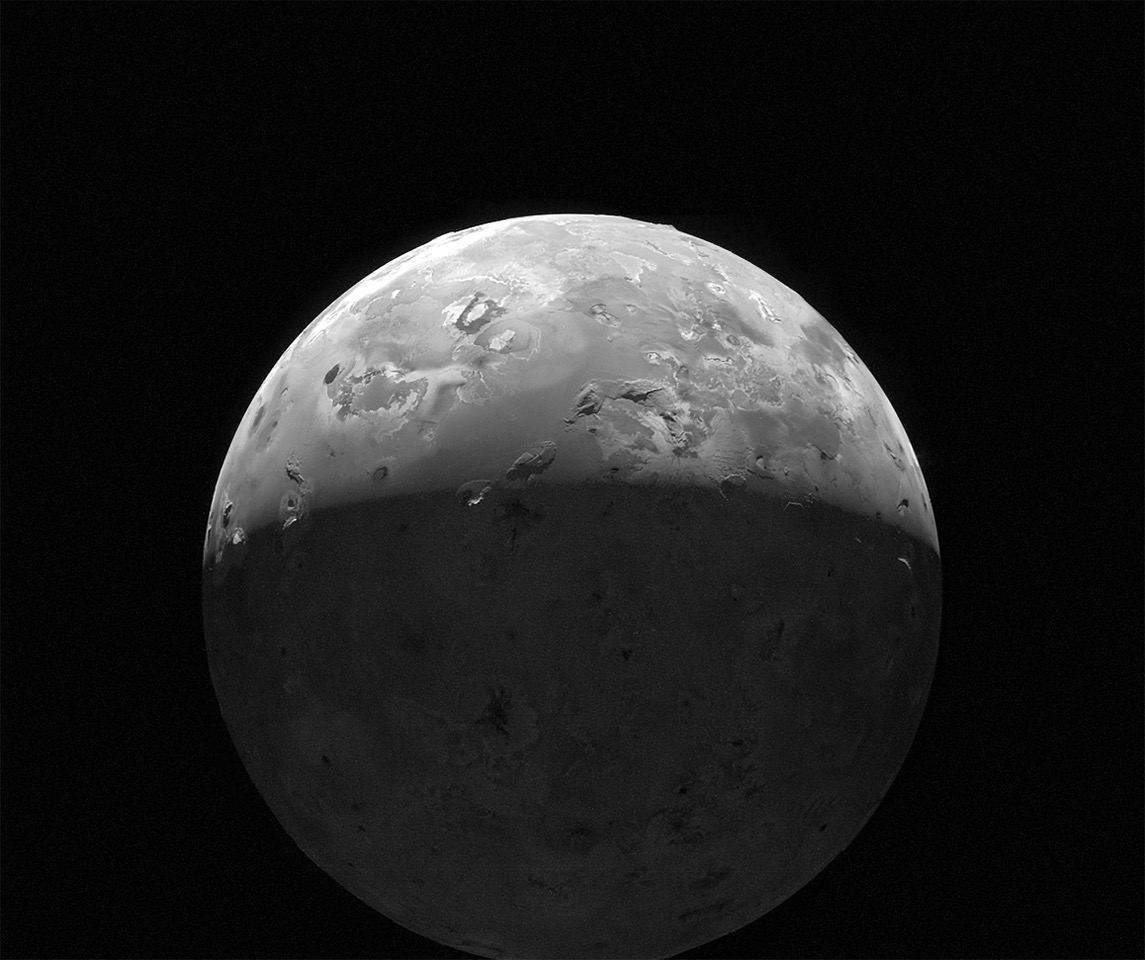
The Juno spacecraft has revealed some fascinating things about Jupiter since it began exploring the system on July 4th, 2016. Not only is it the first robotic mission to study Jupiter up close while orbiting it since the Galileo spacecraft, which studied the gas giant and its satellites from 1995 to 2003. Juno is also the first robotic explorer to look below Jupiter’s dense clouds to investigate the planet’s magnetic field, composition, and structure. The data this has produced is helping scientists address questions about how Jupiter formed and the origins of the Solar System.
Since 2021, the probe has been in an extended mission phase, where it has been making flybys of some of Jupiter’s largest moons, including Ganymede, Europa, and Io. As it passes these satellites, Juno has captured some incredible images with its main imaging instrument, the JunoCam. On Saturday, February 3rd, 2024, the Juno spacecraft made another flyby of Io and took more captivating photos of the volcanic moon and its pockmarked surface. This was the second part of a twin flyby designed to provide new insight into Io’s volcanic nature and the interior structure of the satellite.
Continue reading “NASA’s Juno Probe Makes Another Close Flyby of Io”Juno Spots Salts and Organic Molecules on Ganymede’s Surface
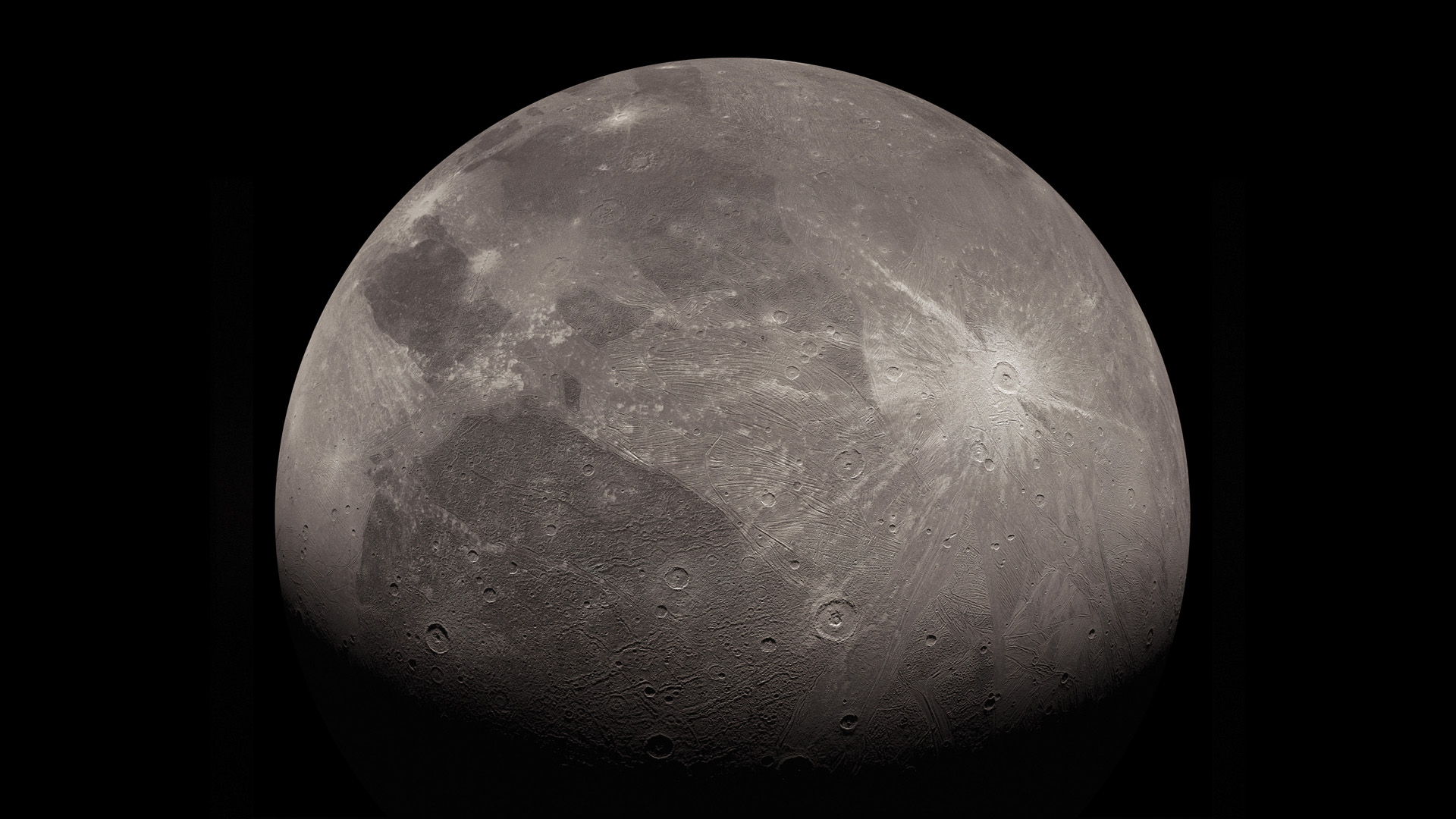
NASA’s Juno mission continues to orbit Jupiter, gathering data on its atmosphere, composition, gravitational field, magnetic field, and radiation environment. This data is helping scientists to learn more about the planet’s formation, internal structure, mass distribution, and what is driving its powerful winds. Periodically, the spacecraft also performs flybys of Jupiter’s largest satellites (the Galilean Moons), acquiring stunning images and vital data on their surfaces. These include optical and thermal images of Io’s many active volcanoes, Europa’s icy terrain, and infrared images of Ganymede.
During its last flyby of Ganymede (June 7th, 2021), Juno collected infrared images and spectra on the moon’s surface using its Jovian InfraRed Auroral Mapper (JIRAM) instrument. According to a recent study by an international team of researchers, this data revealed the presence of salt minerals and organic molecules on the icy moon’s surface. The findings could help scientists better understand the origin of Ganymede, the composition of its interior ocean, and the way material is exchanged between the surface and interior. In short, it could help scientists determine if life exists deep inside Ganymede’s ocean.
Continue reading “Juno Spots Salts and Organic Molecules on Ganymede’s Surface”The Favorite Solar System Moons of Planetary Geologists; An In-Depth Discussion
The moons of our Solar System have garnered quite a lot of attention in the last few years, especially pertaining to astrobiology and the search for life beyond Earth. From the Galilean moons of Jupiter to the geysers of Enceladus to the methane lakes on Titan, these small worlds continue to humble us with both their awe and mystery. But do the very same scientists who study these mysterious and intriguing worlds have their own favorite moons? As it turns out, seven such planetary geologists were kind enough to share their favorite Solar System moons with Universe Today!
Continue reading “The Favorite Solar System Moons of Planetary Geologists; An In-Depth Discussion”Jupiter is up to 9% Rock and Metal, Which Means it Ate a lot of Planets in its Youth

Jupiter is composed almost entirely of hydrogen and helium. The amounts of each closely conform to the theoretical quantities in the primordial solar nebula. But it also contains other heavier elements, which astronomers call metals. Even though metals are a small component of Jupiter, their presence and distribution tell astronomers a lot.
According to a new study, Jupiter’s metal content and distribution mean that the planet ate a lot of rocky planetesimals in its youth.
Continue reading “Jupiter is up to 9% Rock and Metal, Which Means it Ate a lot of Planets in its Youth”Ganymede Casts a Long Shadow Across the Surface of Jupiter
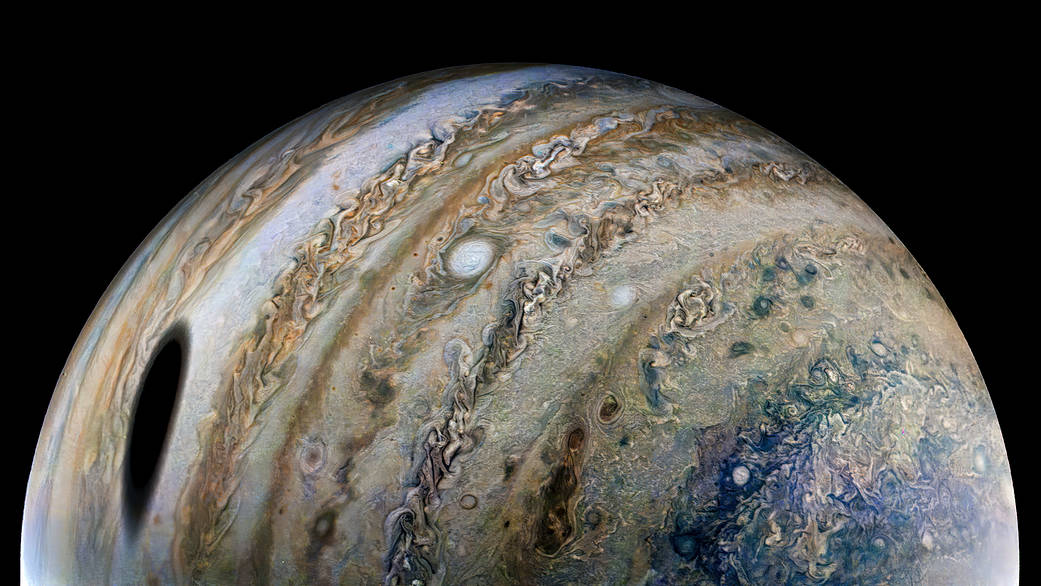
What is that large dark smudge on Jupiter’s side? It may remind you of a certain scene from the sci-fi film “2010: The Year We Make Contact,” where a growing black spot appears in Jupiter’s atmosphere.
But this is a real photo, and the dark spot is just an elongated shadow of Ganymede, Jupiter’s largest moon. Just like when Earth’s Moon crosses between our planet and the Sun creating an eclipse for lucky Earthlings, when Jupiter’s moons cross between the gas giant and the Sun, they create shadows too.
Continue reading “Ganymede Casts a Long Shadow Across the Surface of Jupiter”This was Juno’s View on its 37th Flight Past Jupiter
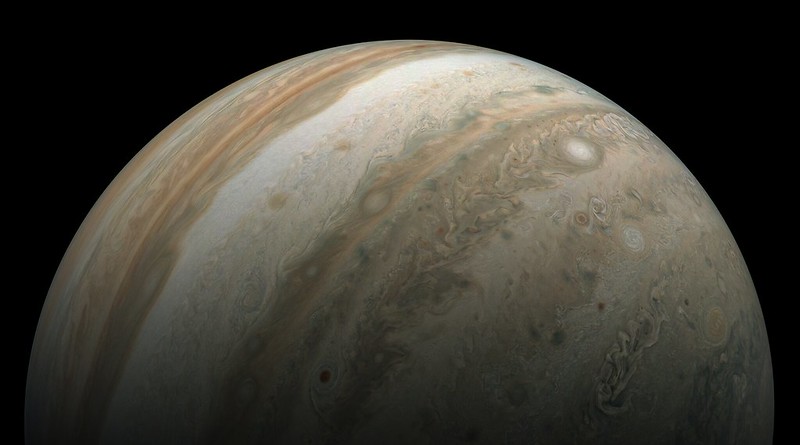
As originally planned, Juno’s 37th close pass by Jupiter – called Perijove 37 – would have been its last. Per the original mission outline, the Juno spacecraft would have been programed to plunge into Jupiter on Perijove 37 as a mission-ending self-sacrifice. Destroying Juno would protect the Jovian moons — especially Europa — from potential future contamination by an unpowered spacecraft wandering adrift through the Jupiter system. As careful as NASA is about taking precautions to limit the amount of Earth-sourced biological material carried by robotic spacecraft, it’s incredibly difficult to ensure that no microbes might have tagged along.
But, back to Juno: as it stands now, the Juno mission is just getting started. With a mission extension granted earlier this year, Juno will continue to operate until at least 2025, with 42 extra orbits added to the mission.
And thank goodness, because the images from Perijove 37 are pretty stunning. The new mission plan put Juno on a relatively close pass to image Jupiter itself, as well as a great view of Jupiter’s moon Europa, see below.
Continue reading “This was Juno’s View on its 37th Flight Past Jupiter”Juno Peers Beneath Jupiter’s Clouds to Reveal its Complex Atmosphere
Many papers are usually released at once for big space exploration missions. Usually, that happens when an entire batch of data has been analyzed. The most recent set of papers is from Juno’s explorations of Jupiter’s atmosphere. With this data dump, scientists now have the first 3D map of the atmosphere of the solar system’s largest planet.
Continue reading “Juno Peers Beneath Jupiter’s Clouds to Reveal its Complex Atmosphere”

